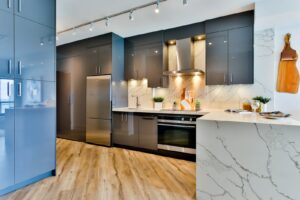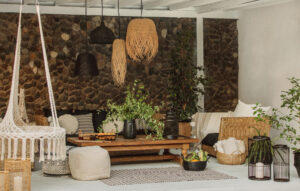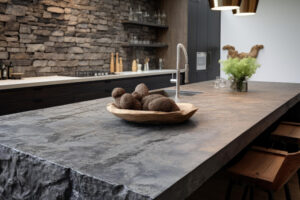Underrated Home Upgrades

When you think of home revamps, extensive room extensions and expensive renovations are likely the first things that come to mind. But the most striking transformations can come from details that are easy to overlook.
If you’re thinking of updating your own home, before planning a large-scale overhaul it’s worth looking at the simple yet effective changes you can make. Here are some ideas that could be the perfect fit, whether you want to stay long-term or increase your home’s value before putting it on the market.
Add a statement front door
Your front door is the first impression your home gives. A tired or generic door fades into the background, but a bold, thoughtfully chosen one immediately draws the eye. Switch out a weather-worn model for a sleek composite design or a solid hardwood option. These materials not only look good but also provide durability and insulation.
Also, consider the colour. This is key, whether you’re investing in a new door or reimagining the one you have. Choose a colour that sets the tone and reflects your own style. Are you a fan of bold colours? Yellow could be exactly what you need to stand out and reflect who you are. Or a beautiful navy blue or deep green could be perfect.
For period homes, a classic door with stained glass panels or brass accents can offer timeless charm, while modern properties are suited to minimalist styles with horizontal slats or matte finishes.
Update lighting fixtures
Lighting defines how a space feels. Even a well-decorated room can fall flat under harsh lighting.
Swap ceiling-mounted fixtures that cast stark shadows for layers of light. Install a sculptural pendant in your dining area or a soft, diffused chandelier in your lounge to elevate the space visually and emotionally.
LED lighting offers energy efficiency and is available in variety of tones, from crisp daylight to warm candlelight. Consider dimmer switches too so that you can control brightness to suit different times of day.
In hallways and bedrooms, wall sconces and statement lamps can add visual interest without needing full rewiring. And always aim to highlight your home’s best features – use accent lights to draw attention to artworks, alcoves or original features.
Refresh your garage
It’s easy to overlook your garage, especially if it’s not connected to your home. However, upgrading this space can dramatically improve your home’s overall appearance, especially if it’s street-facing.
You could start by repainting the garage floor with a high-gloss epoxy coating for a cleaner, polished look that also resists oil stains and wear. Neutral greys and cool tones help the space feel brighter and more spacious. Or you could invest new roller garage doors. Newer models can improve security and free up floorspace.
Inside, remove clutter. From there, you can mount wall storage systems to keep tools, bikes and garden equipment off the floor.
Introduce decorative wall mouldings
Plain walls can feel stark and underwhelming, but decorative mouldings inject personality and texture. From traditional wainscoting in hallways to full-height panel trims in lounges and bedrooms, mouldings introduce a sense of depth and design without needing a complete redecoration.
If you’re aiming for a classic look, opt for raised panels and crisp white paint for a timeless aesthetic. In modern settings, slim, geometric mouldings painted the same colour as the wall offer subtle sophistication.
You don’t need to cover every wall. Choose key feature areas like a dining nook or stairwell for maximum effect. Mouldings are relatively easy to install with adhesive and mitre cuts, making them one of the most cost-effective ways to upscale your interiors.
With a few strategic changes, you can dramatically improve your home’s aesthetic without diving into a full-scale renovation. The key is to focus on the elements that influence how your home is perceived, and choose upgrades that feel both intentional and personal.





